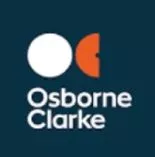Deadline for filing employment-related securities annual returns approaching
Companies operating employment-related securities arrangements are reminded that the deadline to file their annual returns for the tax year ending 5 April 2023 is 6 July 2023.
HMRC has made changes to the templates and additional mandatory information is now required, so companies should allow extra time to complete their returns this year.
What are employment-related securities?
Employment-related securities (ERS) arrangements include:
- tax-advantaged plans- Enterprise Management Incentive (EMI) options, Company Share Option Plan, Share Incentive Plan and Save As You Earn (SAYE) Plan; and
- non-tax advantaged ERS arrangements- this is widely drawn and will broadly include any employee and/or director shares and options, whether acquired under an employee share plan or otherwise.
Companies operating such arrangements have an obligation to:
- register any new schemes established within the 2022/23 tax year by 6 July 2023 (this process can take up to 10 days, so it is important to allow time for registration to enable companies to meet the annual returns deadline).
- file annual returns containing the information required by HMRC for the 2022/23 tax year (including important declarations for any tax-advantaged plans) by 6 July 2023.
This must be done online using HMRC'sEmployment Related Securities Service.
As reported in our recent Insight, HMRC has made changes to the templates from 6 April 2023. These require additional mandatory information to be included in the returns, such as details of the PAYE reference of the employing company and National Insurance numbers.
Looking ahead, we expect HMRC to make further changes to the EMI template next year - read more on the further change to be made from 6 April 2024.
Where can I find the templates?
The templates for use from 6 April 2023 are available at employment-related securities return templates and forms, and further information is available on HMRC's Employment Related Securities Service.
Late filing will trigger automatic penalties from HMRC and will have particularly serious consequences for tax-advantaged plans.
Practical points
Some practical points for companies to note are:
- there are separate templates to use for each type of tax-advantaged plan, and the "Other" template should be used for arrangements which are not tax-advantaged;
- companies using their own templates (rather than HMRC's templates) will need to incorporate HMRC's changes in order for the returns to be submitted successfully;
- where an individual needs to be included on a return but does not have a National Insurance number, an alternative reference should be used on the ERS end of year return - see Employment Related Securities Bulletin 47 (January 2023) for the format of the alternative reference (which is not a National Insurance number and should not be given to the individual or used in any other correspondence with HMRC);
- the relevant share scheme reference number should be included, if available;
- where there have been no reportable events, a nil return must be submitted;
- where a scheme has ceased, employers should record the final event date on the ERS online service and file a return for that year; and
- it is important to take screenshots of all the information uploaded to HMRC, for the company's records.
The content of this article is intended to provide a general guide to the subject matter. Specialist advice should be sought about your specific circumstances.







